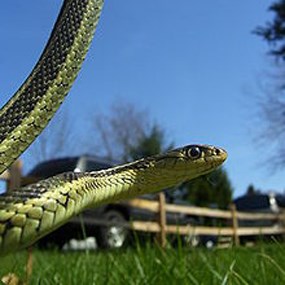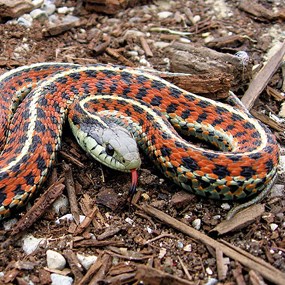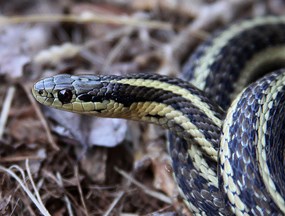|
As you're walking along Park trails, you may startled by the occasional two- to three-foot-long garter snake sunning on the trail. Fortunately, the snakes found here are not poisonous, although a couple of them may release a stinky secretion and bite if handled. In fact, let's hear it for our garter snakes: In addition to fish, frogs, toads, tadpoles, worms, leeches, and sometimes small mammals, they eat slugs. Common Garter Snake 
The most widely distributed snake in North America, this snake is about three feet long and sports a variety of colors and patterns, most commonly a yellow or yellow-green stripe running down the backbone and each side, with red spots along its sides. You'll usually see them by water. Watch yourself: this one may bite if handled. Western Terrestrial Garter Snake 
White-yellow to light brown stripes zig-zag down the back and sides, and colors between the stripes are light grey to brown. They are generally found near water, though they can also be found in the more open sections of the forest, and are often found in tidepools. If handled, they will bite and secrete a foul odor. Northwestern Garter Snake 
This is the most common garter snake in our region. It's tough to identify, because its coloration and pattern is so variable. There may or may not be a well-defined stripe down the back, and if present, may be greenish yellow, cream, yellow, red, orange, greenish yellow, turquoise, blue, white, or tan. There may or may not be stripes running down the sides of the body, and if present, can be cream, white, yellow, or tan. The color between the stripes ranges from black and brown to blue and green. And the belly? Often it's in muted tones of black or brown. Then again, it may be yellow with dark markings. |
Last updated: March 1, 2015
